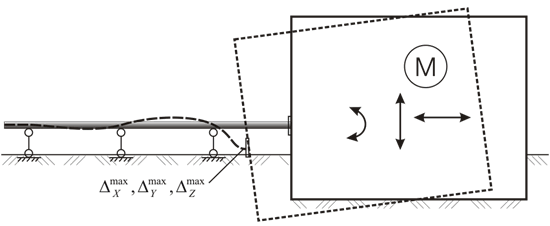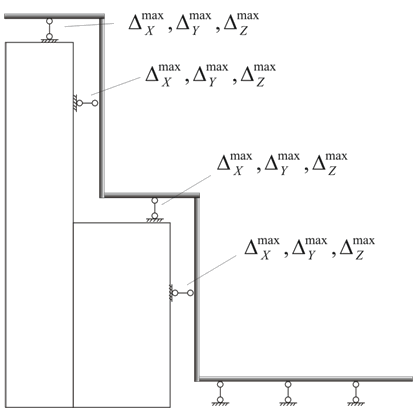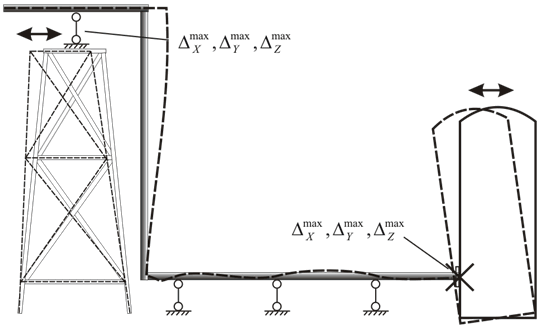
When piping connects to large-mass structures, equipment, or buildings, seismic movements between these components occur. These relative displacements must be considered in piping stress analysis.
Buildings with substantial mass can move out-of-phase with ground motions due to inertial forces, causing rotation and translation.

For piping spanning multiple floors or building structures, account for forces from relative displacements. These displacements come from building analysis without piping. This approach is valid only when the building's mass and stiffness significantly exceed the piping's. For comparable mass and stiffness, perform coupled analysis of piping and structure.

Define seismic anchor movements for any support as independent linear displacements along X, Y, Z axes. Restraints must have rigid or elastic connections in each direction. All seismic anchor movements are associated with specific phase numbers (support groups).
Supports attached to the same building structure move synchronously and share the same phase number. Supports on different structures or ground receive different phase numbers since their displacements are independent.

Seismic anchor movement analysis determines forces in piping caused by relative anchor displacements. Anchors may attach to independent building structures, foundation slabs, or equipment.
| Property | Description |
Phase Group |
Support phase group name and number. More... |
X Axis |
Maximum support displacement along X axis. More... |
Y Axis |
Maximum support displacement along Y axis. More... |
Z Axis |
Maximum support displacement along Z axis. More... |
Insert > Deformation > Seismic Anchor Movement